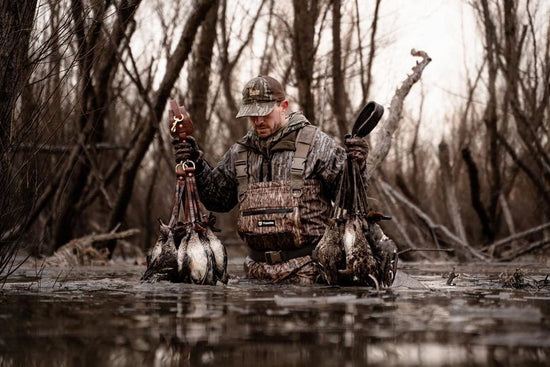Are Fishing Waders a Necessary Investment?
Introduction
Fishing waders allow you to walk into deeper waters without getting soaked. But do you actually need them? The answer depends on the type of fishing you do, the water conditions, your personal preferences, and where you typically fish. This guide will cover when waders are essential gear and when they're optional. It breaks down the pros and cons of different wader styles like chest waders and hip waders. By the end, you'll know if investing in fishing waders is the right move for your angling adventures.

Understand the Types of Fishing Where Waders Are Needed
Wade fishing is one scenario where waders are an absolute must. Whether you're pursuing trout in a rolling stream or bass in a meandering river, being able to safely and comfortably navigate the water is key. Chest waders allow you to:
- Venture into deeper pools and runs
- Stay warm and dry in colder waters
- Maintain secure traction on slippery river bottoms
- Avoid being swept away by strong currents
Without waders, you'd be limited to shoreline areas or risk getting soaked and potentially put in danger. For anglers who primarily fish from:
- Boats
- Shorelines/banks
Waders may be less critical. However, even in these situations, a pair of hip waders or wading pants can come in handy for:
- Launching boats from shallow ramps
- Accessing prime fishing spots along marshy banks
Key Factors to Consider When Deciding on Fishing Waders
The water conditions where you'll be fishing play a big role in deciding if waders are needed.
- Depth—Consider how deep the water is. If you're staying in shallow areas under 2-3 feet deep, you can get by without waders. But as the depth increases past that point, the risks of getting completely soaked or even getting swept away rise quickly without proper waders.
- Current - you'll also want to look at how fast the water is moving. Even knee-deep water can knock you over if the current is strong. Waders give you better footing and stability.
- Temperature—Water temperature matters, too. Waders are essential for cold-weather fishing to prevent dangerous chills. But they can make you overheat on hot summer days, though breathable wader options help with that.
3 Popular Types of Fishing Waders
Your personal preferences also play a role in whether fishing waders are a wise investment. There are three main types of waders to consider:
- Chest Waders - These provide maximum protection and allow you to trudge through deep waters without getting your clothes soaked.
- Hip Waders - Offering more room for movement, hip waders leave your upper body exposed once depths exceed the waist level. They are usually sufficient for anglers focused on quick stream crossings or marshy areas.
- Wading Pants - Similar to hip waders in terms of mobility, wading pants are another option that are lighter than chest waders while providing lower body protection.
If keeping completely dry is the priority, chest waders are ideal despite the lack of flexibility. For those needing more freedom to move, hip waders or wading pants allow a greater range of motion at the expense of potential upper body wetness in deeper waters.
Conclusion
Fishing waders is an absolute must if you plan to wade into deeper bodies of water like rivers, streams, or lakes. Waders provide essential protection, warmth, and stability when venturing beyond knee-deep. Chest waders are ideal for those frequently fishing in swift currents or frigid temperatures where staying completely dry is crucial for safety and comfort.
However, waders would be unnecessary if your angling adventures stick solely to shoreline or bank fishing, where you'll remain on dry land. The same applies to boat fishing in larger lakes or coastal areas unless you anticipate needing to exit the vessel into shallow waters frequently.
FAQs
Q1: How much does a wader usually cost?
Waders usually cost from 30 to 600 USD.
Q2: How to properly care for the waders?
Washing your waders after each use helps maintain their waterproofing and breathability. Dry and store waders in a dry place at room temperature.
Q3: How long should a quality pair of fishing waders last?
In general, you can expect 3-4 seasons of use with moderate use.















